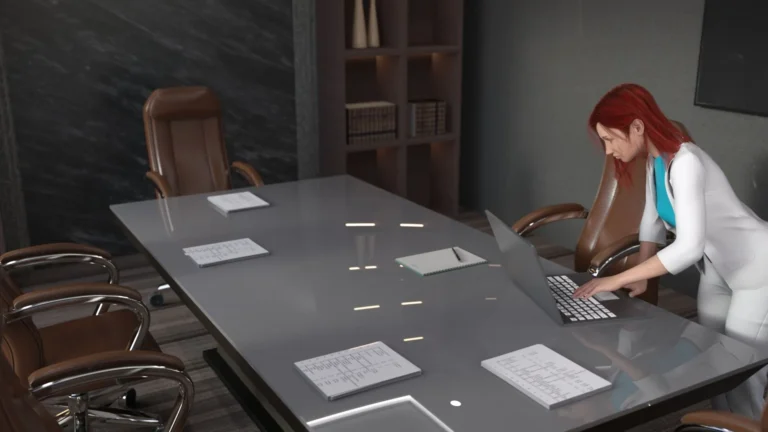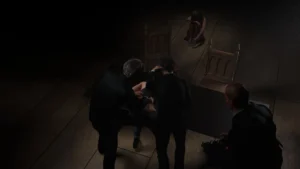
The Theater of Sinners
Play The Theater of Sinners
The Theater of Sinners review
Explore Gameplay, Features, and Tips for The Theater of Sinners
The Theater of Sinners is a captivating interactive experience that has intrigued many with its unique storytelling and immersive gameplay. In this article, we dive deep into The Theater of Sinners game, exploring its core mechanics, visual style, and what makes it stand out in its genre. Whether you’re a newcomer or curious about what this game offers, this guide will provide practical insights and personal perspectives to help you understand why The Theater of Sinners has gained attention.
Understanding The Theater of Sinners: Gameplay and Features
What Is The Theater of Sinners?
Picture this: You wake up in a decaying opera house 🎭 where every curtain hides a secret, and every character has blood on their hands. That’s The Theater of Sinners in a nutshell—a narrative-driven RPG where you unravel mysteries while trapped in a supernatural theater. The core premise? You play as an amnesiac protagonist caught between warring factions of “Sinners,” each with supernatural abilities tied to their darkest regrets. 😱
I remember my first night playing—I spent hours just exploring the velvet-draped corridors, finding hidden letters that revealed why the violinist ghost kept replaying her final performance. ✨ That’s the magic of The Theater of Sinners story: it turns every shadow into a clue and every NPC into a potential traitor. Your choices don’t just change dialogue; they rewrite character fates. One wrong move, and the soprano you befriended might stab you during Act III. Trust me—it happened to me twice!
Pro Tip: Talk to everyone twice. Early interactions often hide layered motives that impact late-game alliances.
Core Gameplay Mechanics Explained
At its heart, The Theater of Sinners gameplay blends point-and-click exploration with tactical decision-making. You’ll scavenge for resources (like cursed sheet music 🎵 or broken masks) to barter for secrets, while interactive game mechanics let you manipulate environments—sabotage a stage light to distract guards or rearrange props to access hidden rooms.
Combat? Forget button-mashing. Every duel is a psychological showdown where you exploit enemies’ guilt through dialogue trees. For example, triggering a sniper’s remorse about his orphaned sister might make him lower his gun. 😮 The game progression The Theater of Sinners ties directly to these moments: Win a confrontation, and you’ll unlock new “Sin Abilities” like short-range teleportation or illusion-crafting.
Here’s a quick reference for key systems:
| Mechanic | Function | Player Impact |
|---|---|---|
| **Guilt System** | Target enemy regrets mid-fight | Unlocks instant kills or alliances |
| **Memory Fragments** | Collect lore items | Restores your character’s powers |
| **Dynamic Stage** | Shift theater layouts | Creates new paths/obstacles |
When I learned how to play The Theater of Sinners, I wasted days fighting head-on. Big mistake! 🚫 The game punishes brute force. Instead, observe patterns—like how the janitor paces near the cellar every hour—then strike when defenses drop.
Unique Features That Set It Apart
What makes this game unforgettable? First, the Theater of Sinners character customization. Instead of slapping on armor, you graft “Sinner Shards” onto your soul 🩸—each shard changes your appearance and ethics. Choose a stalker’s shard, and your skin turns translucent; pick a liar’s, and your dialogue options gain manipulative flair. I turned my protagonist into a ghost-pale trickster, and suddenly, locked doors opened with whispered lies.
Then there’s the branching narrative. Most games boast “choices matter,” but here, selecting who sits beside you during the opera’s climax can ignite a civil war—or force a truce. One of my playthroughs ended with the theater burning because I trusted the wrong tenor. 🔥
And oh, the visual presentation! Every frame looks like a haunted oil painting. Cobweb-chandeliers cast moving shadows that reveal clues, and the soundtrack shifts from piano concertos to dissonant strings during betrayals. 🎹
Among The Theater of Sinners features, three stand out:
– Sin Resonance: Combine abilities (e.g., fire + illusion) for environmental chaos.
– Echoes of the Past: Replay memories to alter present outcomes.
– Live Audience Mechanics: NPCs react in real-time if you perform well (or poorly).
Don’t sleep on costume benches! Changing outfits isn’t cosmetic—it affects how factions perceive you.
Final Advice: Embrace failure. My messiest runs taught me more about The Theater of Sinners gameplay than any guide. Now, go break a leg—literally or figuratively. 😉
The Theater of Sinners offers a compelling blend of narrative depth and interactive gameplay that appeals to players seeking an engaging experience. Its unique features and immersive storytelling make it a noteworthy title worth exploring. Whether you’re curious about the gameplay or looking for tips to enhance your experience, this guide has covered essential aspects to help you get started confidently. Dive into The Theater of Sinners and discover the intriguing world it presents. Ready to explore? Start your journey today!





















